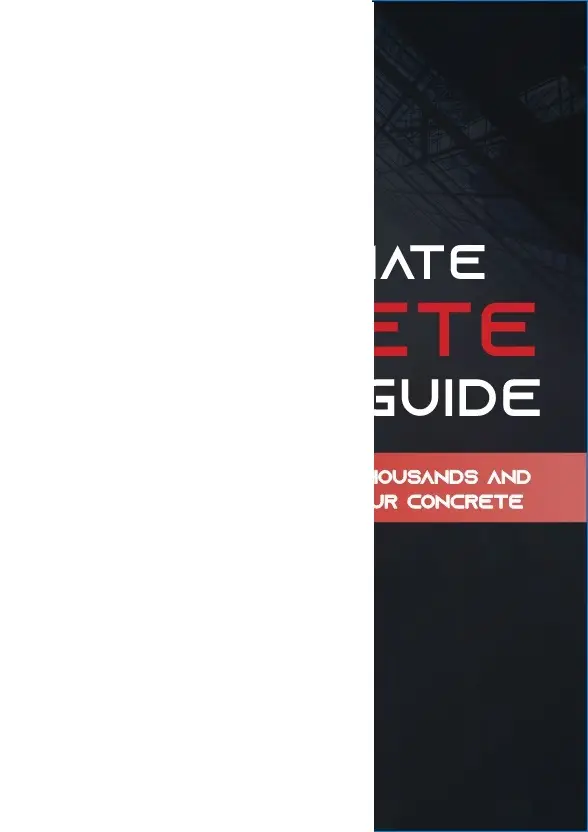We get these questions a lot. Here are our best answers...
Will polyurethane concrete lifting save me money compared with replacing the concrete?
It certainly can. In some instances, we have seen as much as 50-75% savings versus a “tear out and replace” method. Not only can it be less expensive, but our processes require far less down time for you. The polyfoam will be cured in as little as 20 minutes. You can drive on it by the time we are finished.
What is PolyFoam?
Polyfoam, is a polyurethane resin. Some foam expands (two component) while others act as a permeation grout (single component). The two component resin, as the name suggests, starts off as two separate chemicals. Once mixed, these two chemical start to expand from 15x – 50x their liquid state. Single component, permeation resin reacts with ground moisture to infiltrate and combine with soil to create a water impermeable mass that can be used to stabilize soils. Leak seal resin can be used to seal leaks in concrete structures.
How invasive is your lifting process?
Lifting with PolyFoam requires drilling small holes (the size of a dime) in the concrete to allow the resin to get pumped under the slab. Once lifted the small holes are patch with concrete patch and the area is cleaned up. Other methods of lifting such as Mudjacking, require larger equipment and larger holes drilled the size of a baseball.
How Long does the lifting process take?
An average driveway lifting job will take 2-3 hrs to compelte and by the time we leave you will be able to drive your car over the concrete that was lifted. The PolyFoam only takes about 15 minutes to cure to about 90% of its strength.
Can you lift front steps that have sunk?
Yes, lifting front steps is a very common job. In our busy season we do 2-3 of these jobs a week.
Is PolyFoam Safe for the environment?
PolyFoam is SAFE - NSF/ANSI 61-5 Certified & Approved for contact with drinking w.
What if I have large voids under my slab?
This is another very common problem that we can help with. We can inject our PolyFoam under the slab and it will provide the needed support and strength.
I have a crack in my basement wall that is leaking, Can you help?
We deal with alot of foundation wall cracks especially in the winter and spring months when the ground is wet and the snow is melting. We can inject the PolyFoam grout into the crack and it will expand to seal the crack. We can seal cracks that are actively leaking and/or ones that are dormant due to the ground being dry.
How long does PolyFoam concrete lifting last?
We use PolyFoam because it is a much better method compared to Mudjacking since the PolyFoam is impervious to water. Mudjacking fluid is water soluable and normally only last 2-4 years before dissolving and sinking again. PolyFoam when pumped under concrete , has a life expectancy of between 70-200 years. The only caveat is that it Will Not Levitate. So, you need to have strong, well-compacted soil under it to hold it up.
Will polyurethane concrete lifting save me money compared with replacing the concrete?
It certainly can. In some instances, we have seen as much as 50-75% savings versus a “tear out and replace” method. Not only can it be less expensive, but our processes require far less down time for you. The polyfoam will be cured in as little as 20 minutes. You can drive on it by the time we are finished.
What if I have weak soil that keeps sinking?
Weak, loose, uncompacted soil will continue to settle until it become sufficiently compacted and strong enough to hold the weight of the soil & concrete above it. Where weak soil exists the best solution is to strenghten the soild by performing a "deep injection". This is where we drive our injection rods 4'-8' deep and pump a large volume of PolyFoam grout into the soil. After about 10 seconds, it will begin to expan 20-30 times it original volume and strengthen and densify the soil.
Should I have my concrete joints/cracks sealed?
The benefit of sealing the joints & cracks on the surface of your concrete is that it will prevent water from draining under the slab. The more water mixes with our clay soils here in Utah, the weaker they become. Once the get weak envough, the concrete can crack and sink.
Can't find an answer to your question?
We’d love to answer all of your questions. Just Click the button below and we will get you on the schedule!

